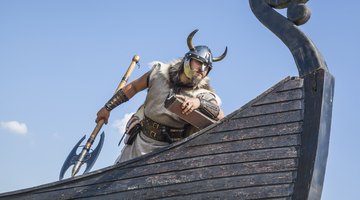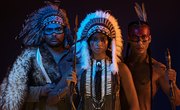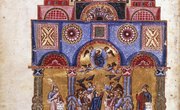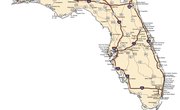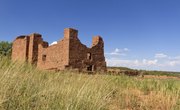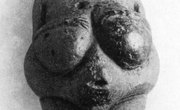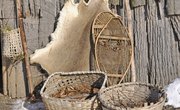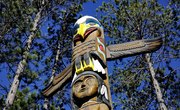The Vikings were a seafaring Nordic people who originated in the coastal areas of Scandinavia, and whose culture flourished especially from the 9th through the 11th centuries. Viking culture was sophisticated and included advanced shipbuilding technology, poetry, metalworking and agriculture. In addition, the Vikings had a complex society with elaborate rituals and social hierarchy. With a reach that extended as far as the Middle East and the North American Continent, the Vikings were an influential power in the Middle Ages, bringing their beliefs and culture with them as they settled new lands.
Beliefs
Vikings were not so much a single people but several scattered groups of closely related people with a shared language (Old Norse), and belief systems and practices that varied somewhat from group to group. Vikings initially held polytheistic religious views that offered an afterlife (the fabled Valhalla) and a pantheon of gods that included Odin, the Allfather, Thor, the god of thunder, and Frey and Freya, siblings who were the god and goddess of fertility. Christian missionaries began to arrive in Scandinavia as early as the ninth century, and with its gradual spread, many Vikings converted or subscribed to a hybrid of pagan and Christian beliefs.
Culture
Viking culture was rich in art and forms of entertainment. Not surprisingly for a people whose homelands featured a cold climate and long winter nights, their entertainment relied heavily on indoor activities. Their literature, rooted in oral tradition, included a wealth of poetry and tales such as the Heimskringla, or sagas of the Norse kings. Vikings enjoyed strategic board games, some of which they adopted from other societies such as backgammon and chess, and others such as hnefatafl, which they devised themselves. Metalworking was another important part of Viking culture, and Viking craftsmen created intricate jewelry and excellent weapons in addition to manufacturing tools and household items.
Local Government
Viking society was clan-based, with widely dispersed small communities led by chieftains who also acted as priests. While Vikings also established trading communities, they did not develop what we would consider towns until the 12th century, after they had largely become settled. Social hierarchy was based on a class system with three primary classes: slaves and serfs who were known as thralls, a middle class of workers known as yeomen or karls, and an upper class who were known as jarls. As Nordic peoples, each community of Vikings had an assembly of its free men called a "thing" which met regularly to settle disputes, choose leaders and make political decisions.
Regional Government
As the Viking presence expanded and flourished in Europe, community things became involved in a hierarchy of larger regional assemblies. For example, Viking settlers in Iceland divided the island into four quadrants. People in each quadrant elected representatives who spoke for them in a general assembly for all of Iceland called the Althing ("assembly of all"). As in lower-level things, the representatives at the Althing voted as equals. Historians consider the Althing one of the earliest examples of a parliamentary democracy, and the general legislative assembly of Iceland has retained the name to this day.
Ships and Sailing
Although the Vikings practiced agriculture in their home bases, they are rightly famed as seafaring raiders, traders and explorers because they were extremely skilled sailors and navigators who built the most technologically advanced ships of their age. Powered by either oar or sail, or both, Viking ships featured a removable side rudder and a shallow keel, allowing them to sail at any depth, navigate rivers and easily bring their ships onto shore. As Vikings set forth to plunder or trade, they tended to establish settlements in the new lands they visited. Many Vikings found a new home in places such as Russia, the British Isles and France, making a permanent contribution to local cultures that can still be felt today.
Related Articles
References
- Time: The Amazing Vikings
- BBC: History - Vikings
- UCLA: The Icelandic Althing: Dawn of Parliamentary Democracy; Jesse Byock
- Homelands: Archeology
- University of Washington: Lecture Overheads: History of the Vikings
- Smithsonian Museum of Natural History: Iceland
- Smithsonian Museum of Natural History: Game of Hnefatafl
- The University of Chicago: Cultural Astronomy
Writer Bio
Agatha Clark is from Portland, Ore., and has been writing about culture since 2001. She specializes in intercultural communication and is completing a Bachelor Arts at the University of Oregon with double majors in linguistics and Spanish. Clark is fascinated by expressions of human psychology and culture. Before refocusing her educational path toward language, she originally went to school to become an artist.

